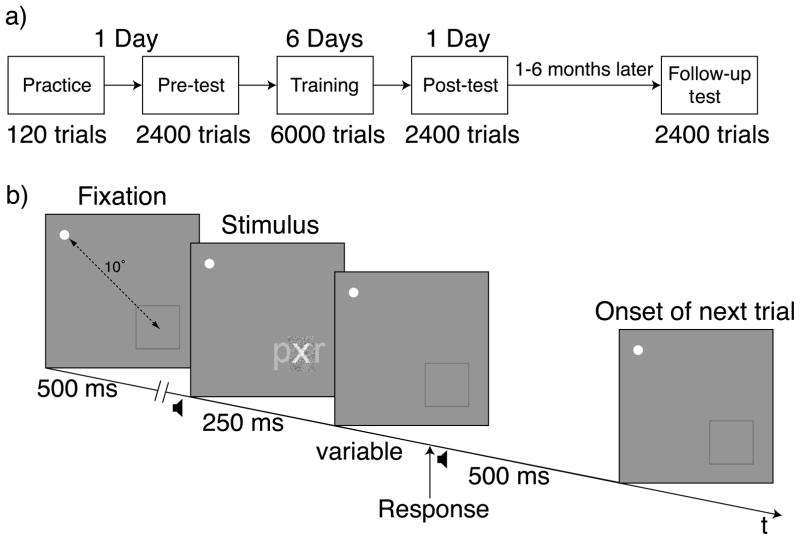Figure 2.
Experimental design. (a) Subjects participated in a brief practice session before commencing the pre-test. Over the following 6 days, subjects underwent training and were then tested for changes during a subsequent post-test. One to six months following the post-test, subjects participated in an additional session, which followed the same experimental routine as the pre- and post-tests except that the trials of unflanked and flanked letters were randomly interleaved for each noise level. (b) Stimulus timing in a given trial for the pre-, post-, and follow-up tests. A square target box marked by low-contrast dark lines and a size equal to five times the subject’s letter acuity in x-height was shown on the screen in the absence of stimuli to indicate the expected target position in peripheral vision. After 500 ms, the stimulus was presented for 250 ms along with a brief tone; upon giving a response, a subject was provided with auditory feedback. The next trial followed after a 500-ms delay.

